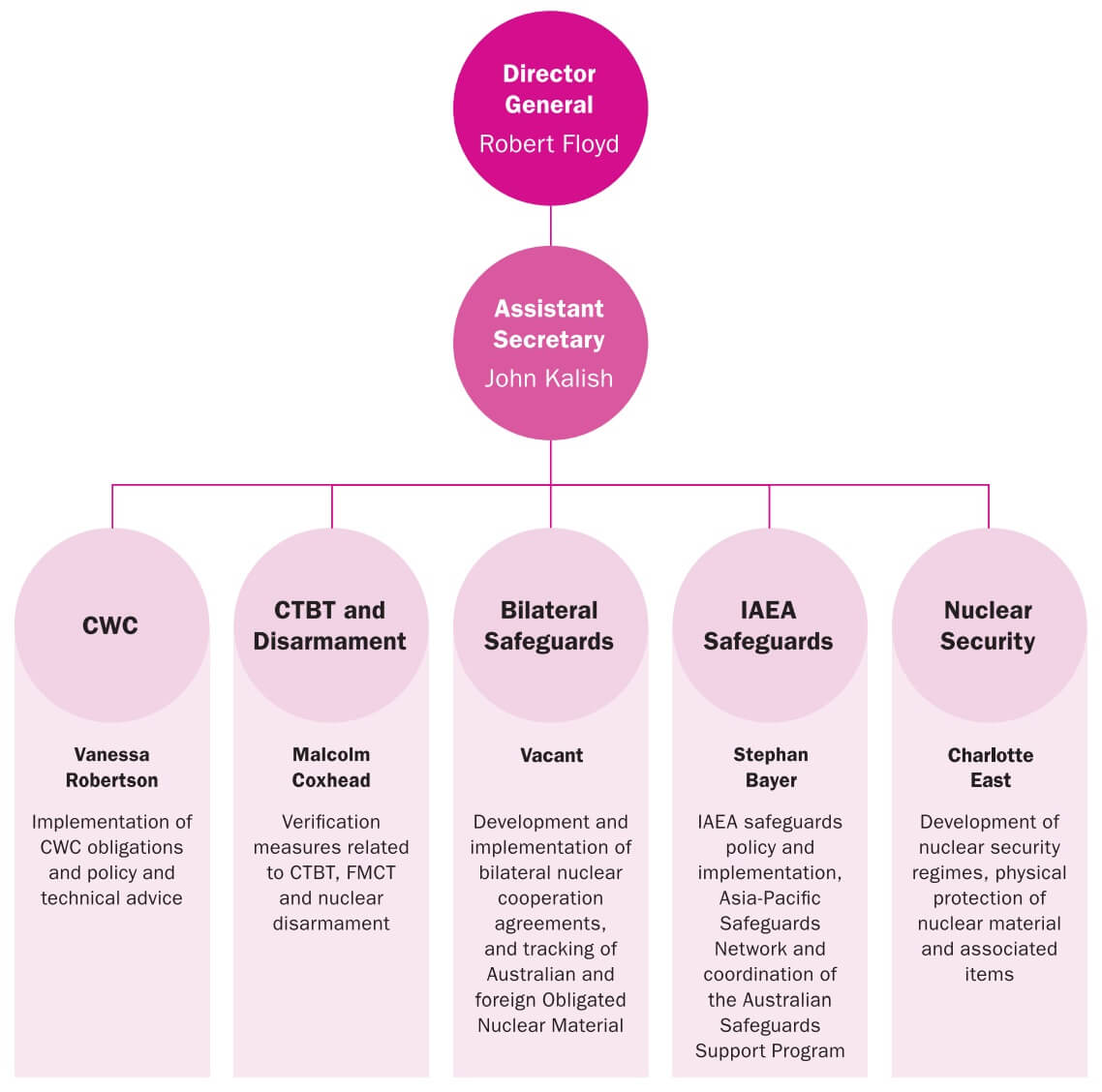Corporate Governance
Portfolio Minister
Responsibility for administration of the legislation under which ASNO operates – the Nuclear Non-Proliferation (Safeguards) Act 1987, Chemical Weapons (Prohibition) Act 1994 and Comprehensive Nuclear Test-Ban Treaty Act 1998 – rests with the Minister for Foreign Affairs.
Director General ASNO
The Director General ASNO reports directly to the Minister for Foreign Affairs. The position combines the statutory offices of the:
- Director of the national authority for nuclear safeguards (formerly Director of Safeguards), as established by the Nuclear Non-Proliferation (Safeguards) Act 1987;
- Director of the national authority for the Chemical Weapons Convention, as established by the Chemical Weapons (Prohibition) Act 1994; and
- Director of the national authority for the Comprehensive Nuclear-Test-Ban Treaty, as established by the Comprehensive Nuclear-Test-Ban Treaty Act 1998.
The Director General ASNO is a statutory position, appointed by the Governor-General. Remuneration for this position is determined by the Remuneration Tribunal.
Dr Robert Floyd held the position of Director General ASNO from the 29 November 2010 until he stepped down on 30 July 2021. Dr John Kalish will act in the position until the appointment of a new Director General.
Assistant Secretary ASNO
The Assistant Secretary ASNO deputises for the Director General and is responsible for the day-to-day operations of the office.
Dr John Kalish has held this position since 21 April 2010.
ASNO Staff
ASNO staff, other than the Director General, are employed under the Public Service Act 1999 as a division within the Department of Foreign Affairs and Trade (DFAT) and subject to the DFAT Enterprise Agreement. Further details can be found in Table 20 and the DFAT Annual Report 2020–21.
In 2020–21 ASNO had an allocated staff level of 16 FTE.
ASNO's organisational structure is closely aligned with its outputs and can be found in Figure 4.
| Male | Female | Total | |
|---|---|---|---|
| SES B2 | 1 | 0 | 1 |
| SES B1 | 1 | 0 | 1 |
| Executive Level 2 | 2 | 2 | 4 |
| Executive Level 1 | 2 | 2 | 4 |
| APS Level 6 | 1 | 1 | 2 |
| APS Level 5 | 0 | ||
| APS Level 4 | 0 | ||
| TOTAL | 7 | 5 | 12 |
Figure 6: ASNO's Organisational Structure at 30 June 2021

Training and Development
ASNO's primary training requirements are professional development of specialist skills. ASNO is proactive in managing this training, in part through participation in IAEA and OPCW led training courses and participation in international conferences and negotiations. Further details are in Table 21.
| Training and development activity | Person days |
|---|---|
| Formal DFAT courses | 21 |
| Structured work unit and on-the-job training, including planning days | 36 |
| Seminars, workshops, conferences, overseas negotiations | 32 |
| External formal courses | 14 |
| Academic study | 3 |
| IAEA Consultancy | 18 |
| TOTAL | 125 |

Two ASNO staff participated in an online regional training course on Additional Protocol Commodity Identification run jointly between the Japan Atomic Energy Agency (JAEA) and the Korea Institute of Nuclear Nonproliferation and Control (KINAC) on behalf of the IAEA. (Photo courtesy of the JAEA.)

